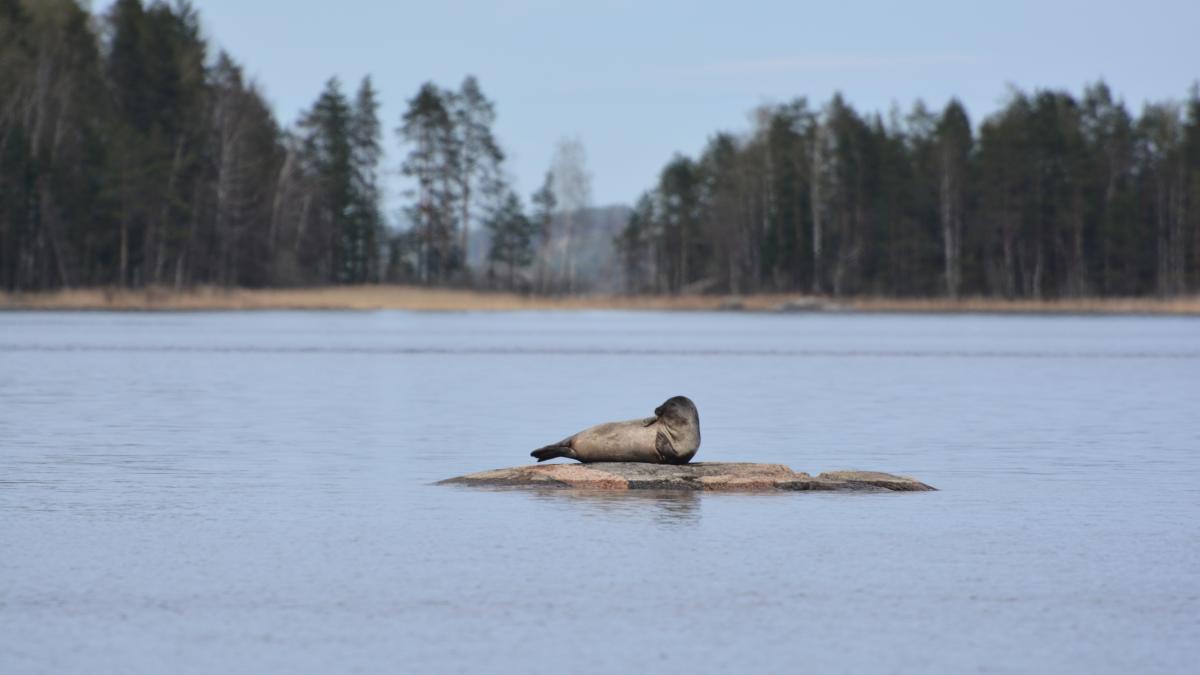Saimaa ringed seal habitats proposed to UNESCO World Heritage tentative list

Finland intends to propose the Saimaa ringed seal habitats in the Lake Saimaa archipelago as a new natural site to be inscribed on the UNESCO’s list of World Heritage sites. Minister of the Environment and Climate Change Krista Mikkonen told about the process to update the tentative list at the World Heritage Forum on 11 November.
The aim of the UNESCO World Heritage Convention is to ensure that the world’s most valuable natural and cultural heritage sites are preserved. The inscription of a site on the World Heritage list requires that it is of special global significance and the preservation of its values has been ensured.
“According to the National World Heritage Strategy, the sites Finland proposes to be inscribed on the list must be of very special value. This is what the Saimaa ringed seal habitats truly are. The protection of Saimaa ringed seal has become the symbol of nature conservation in Finland, and it requires constant efforts,” Mikkonen says. The population that at its lowest was just 130 to 160 individuals has now recovered to about 400 individuals. However, climate change is a serious threat to the Saimaa ringed seal population as well.
The proposed World Heritage site is part of Lake Saimaa, the largest lake in Finland. What Finland is proposing is a so-called serial nomination that would mainly consist of state-owned protection areas included in the Nature 2000 network. “The national urban park envisaged to be set up in Savonlinna and restrictions on net fishing would significantly support the approval of the project at UNESCO,” Mikkonen says.
The tentative list of Finland is currently being updated in accordance with the World Heritage Strategy. The archipelago habitats of Saimaa ringed seal is the proposal of the Ministry of the Environment and Metsähallitus for a natural World Heritage site. Metsähallitus is a state-owned enterprise that manages state-owned lands and waters in Finland. The Ministry of Education and Culture will give its proposal for the cultural sites later on. The proposals will be included in the national tentative list as sites that Finland will nominate for inscription on the list of World Heritage sites. The Ministries aim to submit the tentative list updated with the new sites to UNESCO in January 2021. The decision on the sites to be inscribed on the list of World Heritage sites is made by the World Heritage Committee composed of 21 state parties to the Convention. “Our aim is that the Committee could decide on the inscription of the Saimaa ringed seal habitats in Lake Saimaa archipelago on the list of World Heritage sites at its meeting in 2024,” Mikkonen says.
At the moment there are a total of 1,121 sites on the list, of which 213 represent natural heritage. Finland has seven World Heritage sites on the list, six of which represent cultural heritage and one, the Kvarken Archipelago, is a natural heritage site.
The estimated costs of the project in 2021–2023 are about EUR 210,000. The annual costs of Metsähallitus arising from the prestudy and when the application is being prepared would amount to about EUR 70,000. In the other sites in Finland the appreciation and interest associated with the World Heritage sites has significantly boosted the economies of the regions concerned. “What the growth in tourism also means is shared responsibility for preserving the values of the World Heritage sites despite the larger numbers of visitors,” Minister Krista Mikkonen says.
Inquiries
Jukka-Pekka Flander, Senior Ministerial Adviser, tel. +358 295 250 064, [email protected]
Matti Hovi, National Park Superintendent, tel. +358 206 396 811, [email protected]
Meeri Koivuniemi, Specialist, tel. +358 40 182 1697, [email protected]
